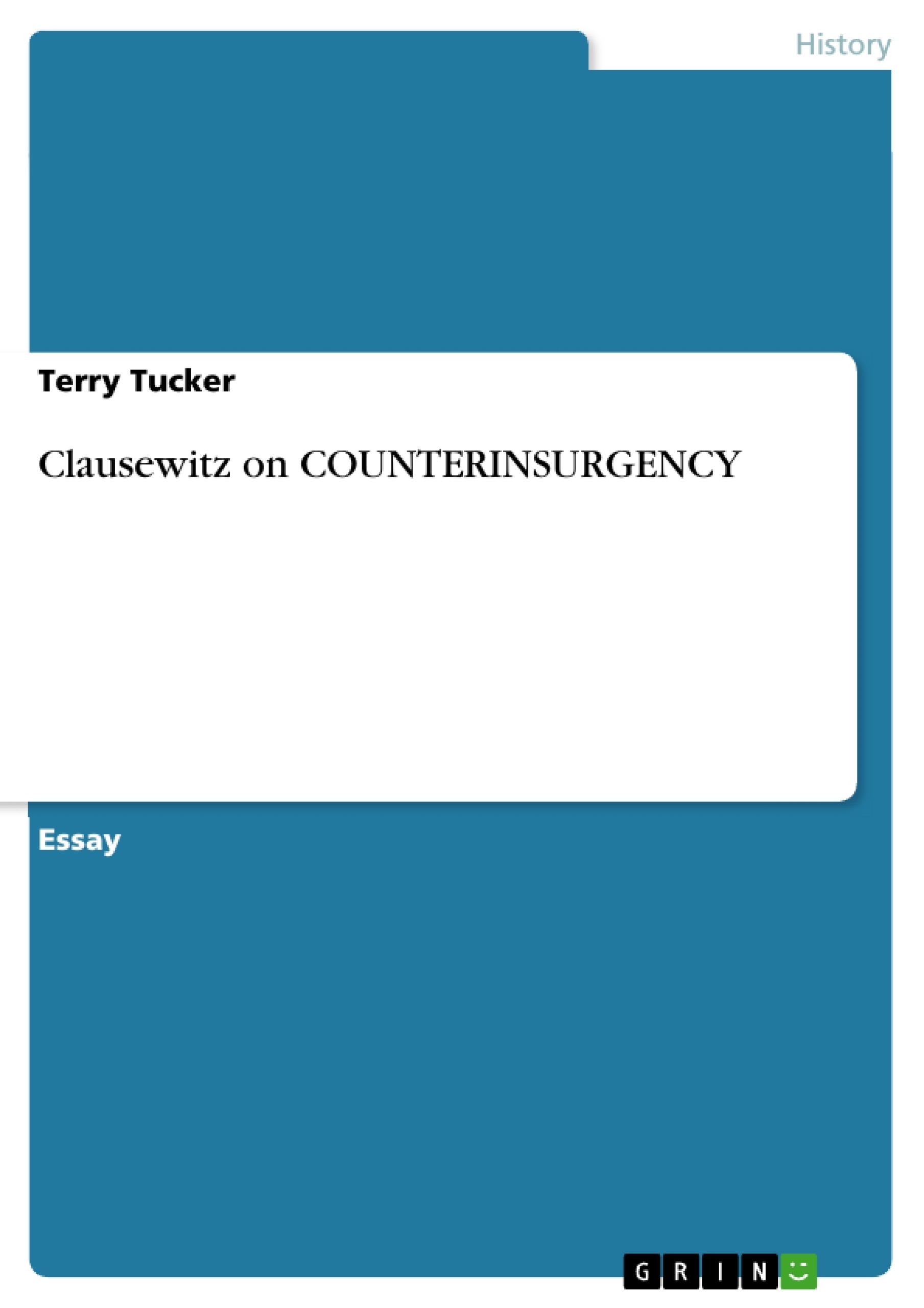Contemporary counterinsurgency doctrine essentially describes counterinsurgency as an inherently political and cultural contest for the trust of the population and an inherent principle in this contest is the primacy of legitimate government: essentially politics has primacy and in counterinsurgency, “all politics is local.”
Clausewitz said that “the ideal of a logically complete or sufficient answer to any problem in warfare is sheer delusion”. Many would ask how a book written over 150 years ago would be relevant today and worth the time in a counterinsurgency.
You will find a text preview here soon.
Excerpt out of 4 pages
- scroll top
- Quote paper
- Professor of History Terry Tucker (Author), 2011, Clausewitz on COUNTERINSURGENCY , Munich, GRIN Verlag, https://www.grin.com/document/165134
Look inside the ebook
-

-

-

-
Upload your own papers! Earn money and win an iPhone X. -

-
Upload your own papers! Earn money and win an iPhone X. -

-
Upload your own papers! Earn money and win an iPhone X.

